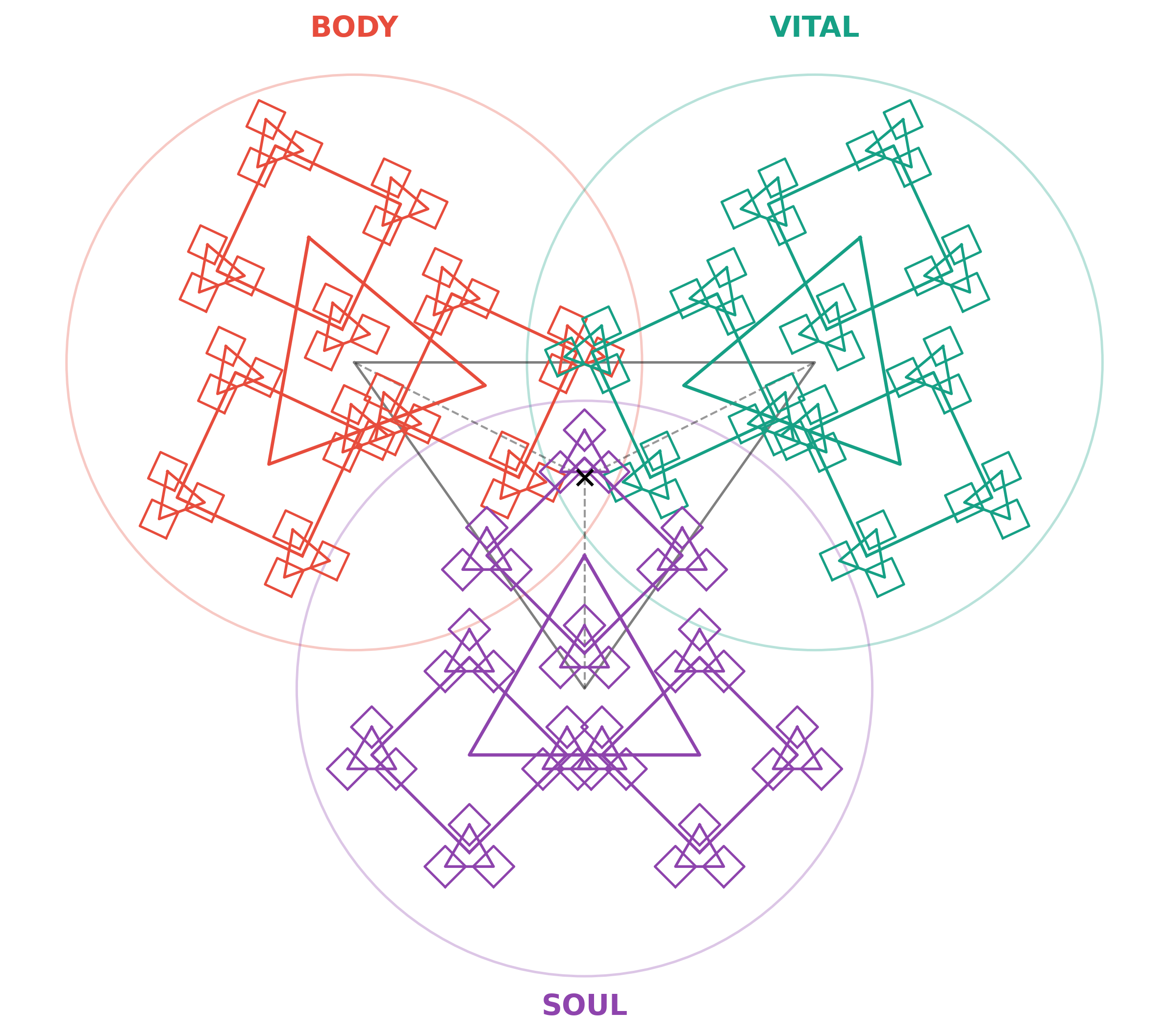Fractal-Spirit NPC Model: A New Framework for Emergent AI in Games
1. The Problem with Current NPC AI
Most NPCs in games today are predictable. Whether powered by finite state machines (FSM), behavior trees, or utility AI, their behavior quickly becomes repetitive. Players learn the script, immersion breaks, and NPCs stop feeling alive.
2. The Proposal: Fractal-Spirit NPC Model
The Fractal-Spirit NPC Model introduces a new approach: NPCs are not controlled by scripts, but by a relational topology of three core states:
B (Body) – sensory inputs and physical constraints
V (Vital) – impulses, emotions, energy levels
S (Soul) – identity, memory, continuity
These states interact through mathematical functions that generate dynamic, evolving behavior.
3. The Core Mechanics
Instead of branching logic, NPCs operate through tension and balance equations:
State tension:
S=∣B−V∣+∣V−S∣+∣S−B∣S = |B - V| + |V - S| + |S - B|S=∣B−V∣+∣V−S∣+∣S−B∣
Harmonic balance:
H=(B×V×S)1/3H = (B imes V imes S)^{1/3}H=(B×V×S)1/3
Where B, V, and S represent the current activity level of each principle. NPC decisions emerge from these tensions, rather than from pre-scripted choices.
Fractal Extension: 3 ↔ 4 Pattern
In addition to the horizontal geometry of Tension (S) and Harmony (H) across the three centers (Body, Vital, Soul), the system also expands vertically through a fractal pattern of 3 and 4.
Mathematically:
N(n) = \prod_{k=1}^n a_k,\quad a_k = \begin{cases} 3 & \text{if } k \text{ is odd}\\ 4 & \text{if } k \text{ is even} \end{cases}
This generates the sequence:
3,12,36,144,432,1728,…
Here, 3 represents the abstract principles (creation, preservation, transformation), while 4 represents material manifestations (elements, states, directions). Consciousness — and by analogy, NPC identity — is not linear but expands fractally: each triadic layer unfolds into four expressions, and each of those folds back into three principles, and so on.
This alternating 3 ↔ 4 fractal provides a skeleton for emergent complexity. It suggests that NPCs built on this model don’t just “store” states but continuously branch into deeper layers of potential identity. The presence of the number 432 within the sequence (well-known in cosmology and harmonic theory) hints that this pattern is not only computational but also cosmically resonant.
By combining the local equations (S and H) with the global fractal structure (3 ↔ 4), the framework becomes both a geometry of balance and a topology of expansion — a map for emergent, lifelike behavior in artificial agents.
4. How It Works in Gameplay
Input: NPC senses the environment (vision, sound, proximity, player actions).
Process: Internal equations update the NPC’s Body, Vital, and Soul states.
Output: The NPC chooses an action not from a script, but from the dynamic state it now inhabits.
Example: an NPC who was betrayed by a player will develop mistrust not because of a dialogue flag, but because the relational balance of its states shifted.
5. Advantages Over Existing Models
Emergent personality: No two NPCs evolve in the same way.
Scalable: All NPCs use the same formulas, but different proportions of B/V/S create infinite diversity.
Organic social networks: NPCs develop relationships with each other as their internal states interact.
Player impact: Every interaction leaves a lasting trace in NPC memory and behavior.
6. Applications
Role-playing games (RPGs) with long-term character development.
Massive multiplayer online (MMO) games with living social dynamics.
Simulation games where NPCs act as autonomous agents rather than background figures.
7. Conclusion
The Fractal-Spirit NPC Model provides a concrete framework for simulating consciousness-like behavior in NPCs. It replaces pre-scripted decision trees with emergent, evolving dynamics.
By publishing this framework, we establish prior art: these principles cannot be patented or claimed by others without reference to this model. This ensures the concept remains open for developers, researchers, and designers who wish to create the next generation of living, responsive NPCs.
For a conceptual-art interpretation of related ideas, see the Typotecture project on Zenodo




